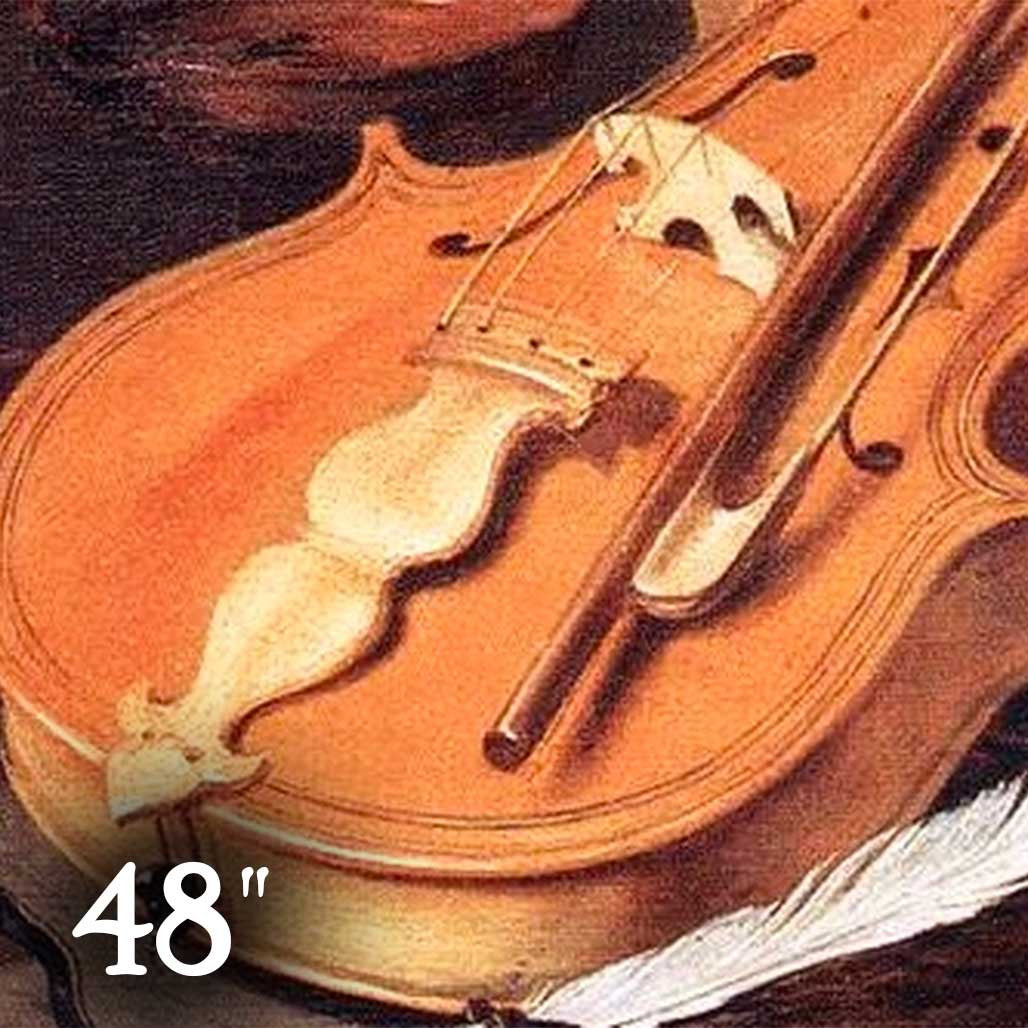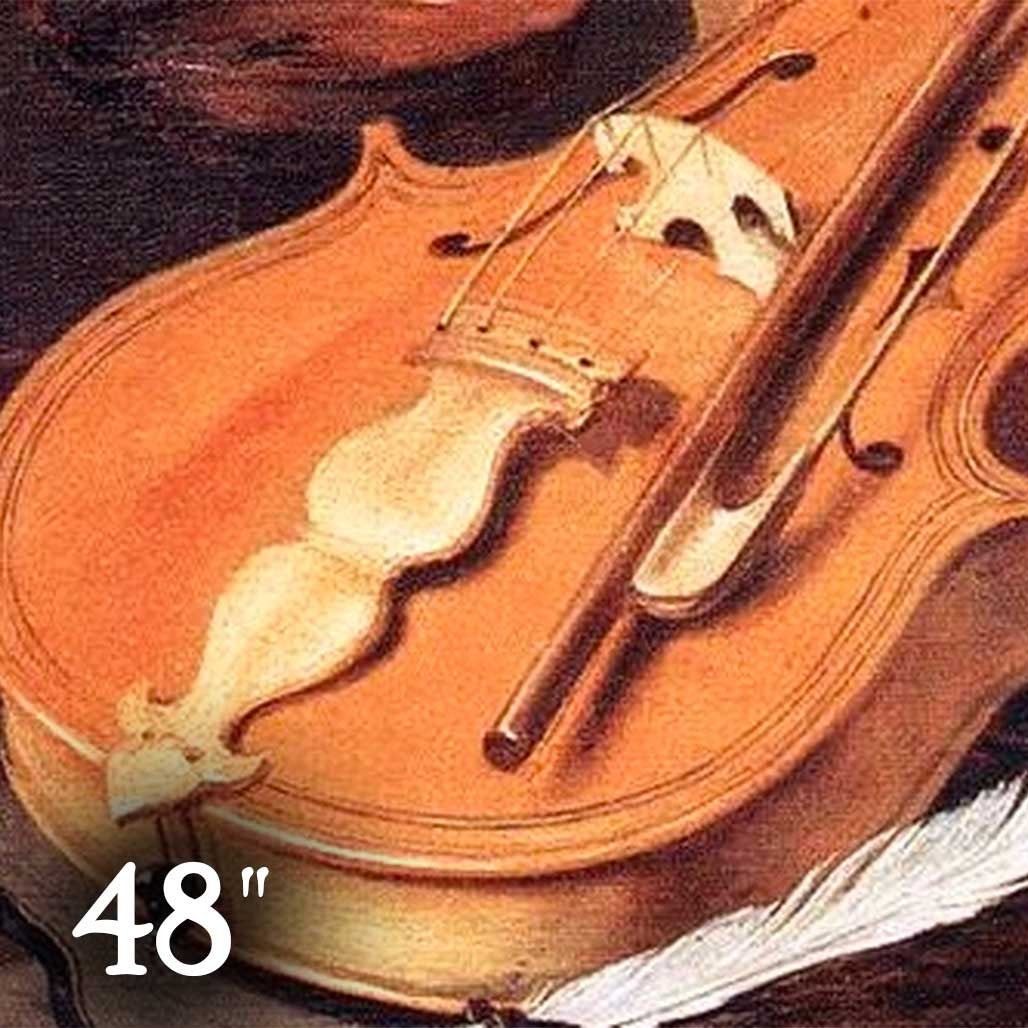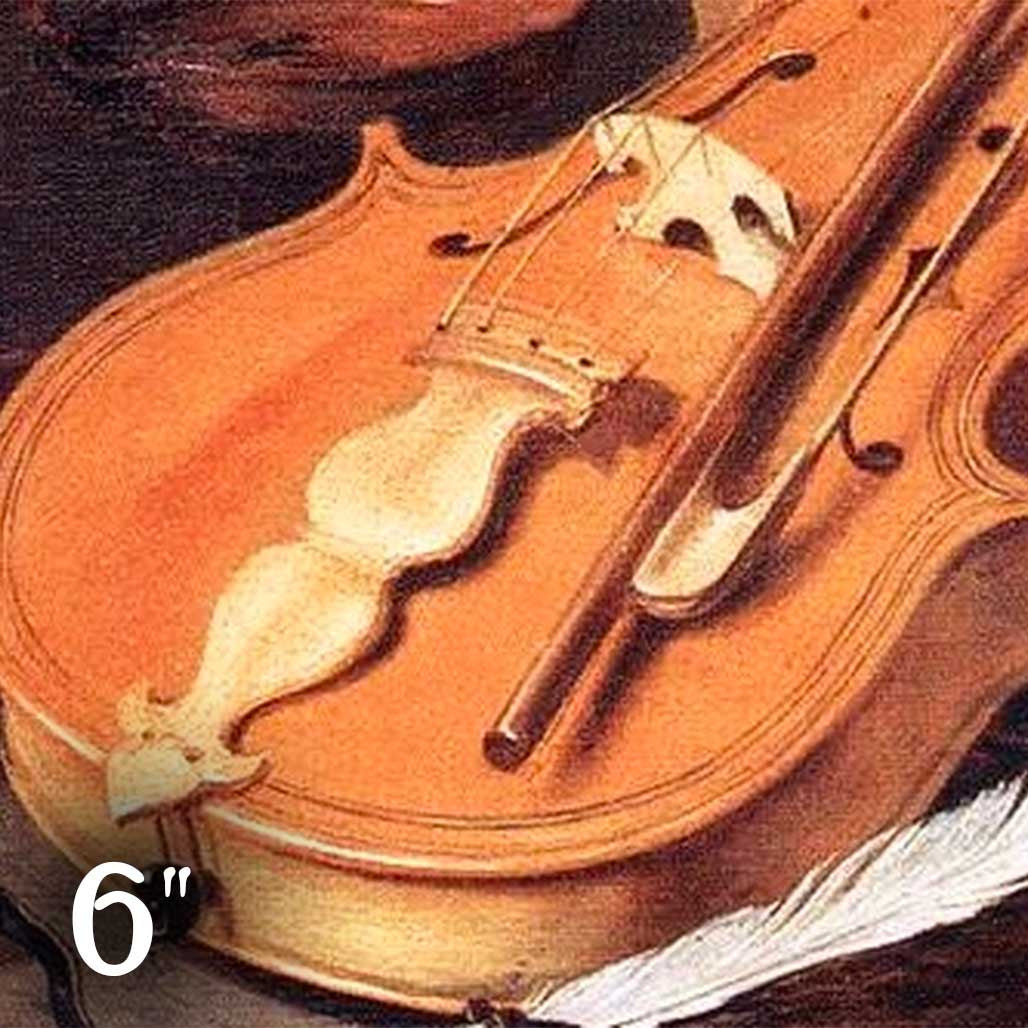Tailgut made of beef serosa used to attach the tailpiece onto the instruments of the violin family and some viols.
Tailgut is usually sold by a diameter thickness. Violins and violas use tailgut that is from 1.90mm to 2.20mm thick. Cellos use a gut around 3.00mm thick, and a violone / double bass should use a gut of about 5.00mm thick.
-
For a description of how to use tailgut and attach it to a tailpiece, please see our tying tailgut article.
The thickness that you choose depends on the qualities you are looking for. A thicker gut will be more stable and stretch less than a thinner gut, but it may not allow as much vibration in the tailpiece as the instrument needs to sound its best. One of the advantages to the use of real gut over synthetic gut is that the flexibility of the tailgut can be changed simply by changing the diameter of the gut and this can have a radical effect on the tone and response of the instrument.
Natural strings are hand-rubbed with a light oil. Varnished strings have three coats of finish before being hand polished with the oil. There is an additional charge for varnished strings. The string comes with plain, unknotted ends.
Use our String Calculators to find the correct strings for your instrument. You can find Specific String Tensions here.



















